The era of personalized banking has arrived
In the financial services industry, effective communication is pivotal. Beyond quality products, conveying value matters. So content creation becomes crucial. Especially since brick and mortar banking has evolved to a more digital experience. Customers want personalized experiences which means they also want content that speaks to their unique financial goals. Which is why it’s mission critical to effectively communicate banking products to different customer groups.
Consider a young professional, a family planning for a child’s future, and a retiree looking to secure their savings. Each has distinct priorities. Within your content, the way you use tone, terminology, the level of clarity, and more combine to position different banking products as tailored solutions to their specific situations.
Effective content alignment starts with understanding your customers. You first need insights into their behaviors, aspirations, challenges, and goals. Each customer segment is a piece of the puzzle, and your content serves as the bridge connecting them to the right solutions. And then, you need a way to make sure the content you create for those solutions is aligned with your content guidelines for different audiences.
In this blog, we’ll explore the art of using content to align banking products with diverse customer groups. From understanding your customers’ needs to choosing the right channels for distribution, we’ll cover the entire process of creating impactful content strategies, using Acrolinx.
Step one: Understand your audience and their needs
Consider the different audience types your content has the possibility to speak to. Audience types may include:
- Retail customers (savings, checking, credit cards)
- High-Net-Worth Individuals (HNWIs) and affluent customers (wealth management)
- Small and Medium-Sized Enterprises (SMEs) (business loans, credit)
- Corporate clients (treasury management, trade finance)
- Startups and entrepreneurs (business banking solutions)
- Students and young adults (student accounts, financial education)
- Seniors and retirees (retirement planning, savings)
- Niche markets (cultural communities, expatriates)
- Online and mobile banking users (digital services, convenience)
- Ethical and socially responsible investors (sustainable finance options)
- Non-profit organizations and charities (donation accounts, tailored solutions)
Let’s take a closer look at two different audience segments and how you might alter your content strategy for each:
A. Startups and Entrepreneurs
- Tone of Voice: Energetic, innovative, and empowering.
- Content Type: Informative blog posts, video tutorials, success stories, webinars.
- Channels: Social media platforms (LinkedIn, X), entrepreneurial forums, business networking events.
- Approach: Focus on content that addresses their unique challenges, such as securing funding, managing cash flow, and scaling their businesses. Use success stories and case studies to inspire and showcase the bank’s support in helping startups succeed. Engage in interactive webinars and Q&A sessions to provide practical advice and foster a sense of community.
B. Seniors and Retirees
- Tone of Voice: Caring, trustworthy, and reassuring.
- Content Type: Comprehensive guides, informative seminars, retirement planning calculators, newsletters.
- Channels: Traditional media (TV, radio), local community events, retirement planning workshops.
- Approach: Create content that addresses retirement planning, estate management, and healthcare concerns. Develop user-friendly retirement planning tools and calculators that empower seniors to make informed decisions. Host in-person seminars and workshops at local community centers to provide face-to-face guidance and build trust. Use traditional media to reach a demographic that may not be as active on digital platforms.
Step two: Create and manage terminology and approved messaging
Customers rely on your content to educate themselves and solve any issues they might encounter while trying to complete their banking goals. Documenting important terminology and messaging that must be used or avoided is a pivotal step to keep the customer experience consistent across all your digital touch points. Managing the consistent use of messaging and brand-specific terminology in banking product and technical content is vital because it:
- Maintains consistency and clarity
- Increases efficiency and accuracy in responses
- Prevents confusion and misunderstandings for customers
- Reduces the risk of compliance and legal issues
- Enhances customer trust and satisfaction
- Facilitates effective knowledge transfer
- Supports adherence to industry regulations and standards
With Acrolinx, you can bring your terminology guidance into the authoring environments of your writers. You can set preferred, unsuitable, and content-dependent terms to keep your content creators aligned.
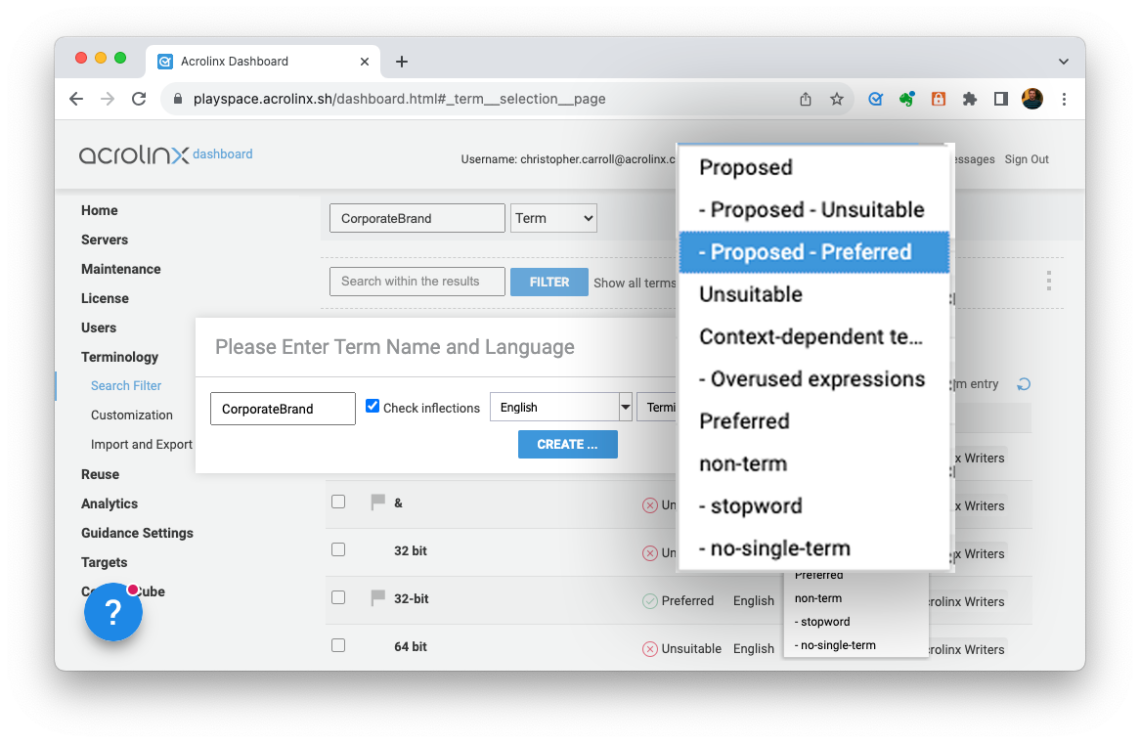
Likewise, you can also determine pre-approved messaging for different audience types. This can be important not only to align content into the right tone, but also for regulatory compliance. Approved Messaging will capture you statements that must be used verbatim and make sure they are used correctly in all of your content. This is great for correcting:
- Absolute language
- Unachievable guarantees
- Customer and industry quotes
- Established disclaimers
- Misleading and incorrect statements
Take a look below to see how you can configure your preferred messaging.
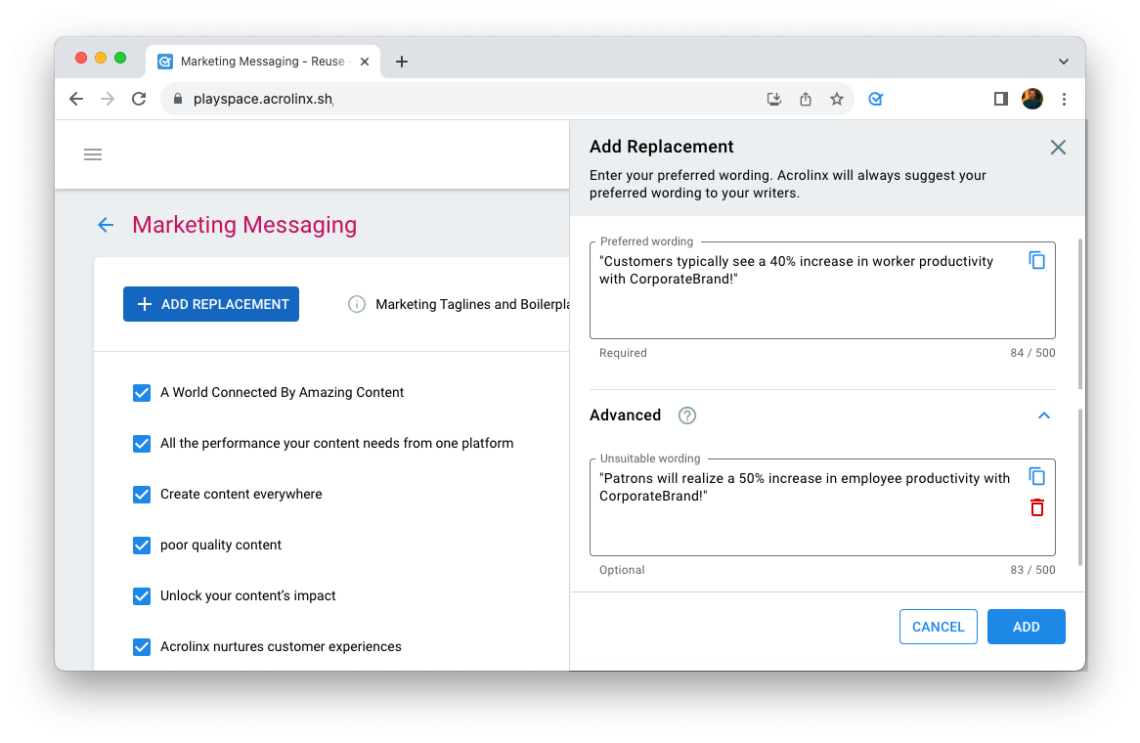
Step three: Develop guidelines for different audience and content types
This is an obvious one: Your enterprise needs to have clear and detailed content guidelines. These guidelines, typically captured in a style guide, need to include policies and standards around:
- Correctness (grammar and spelling)
- Clarity
- Company-specific terminology
- Scannability
- Inclusivity
- Approved messaging
- Tone of voice
- Consistency
If you want to learn how to develop your own content style guide, check out our comprehensive guide. The image below shows how you can configure your style guide with Acrolinx:
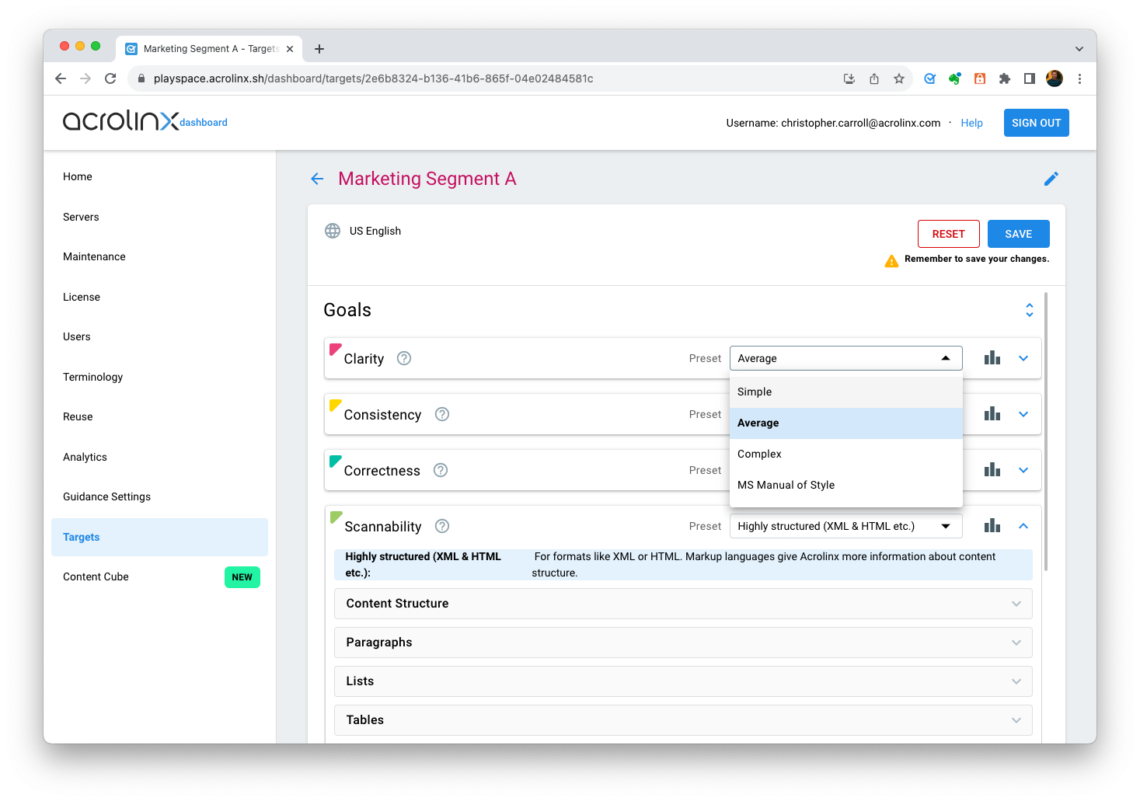
Step four: Conduct regular content audits
In the financial industry, accuracy and credibility are paramount. Inaccurate or outdated information in content leads to misinformed decisions by customers, which have serious financial consequences. Auditing content helps to identify and rectify any inaccuracies, ensuring that customers can trust the information provided.
But with so many different product-specific terms and phrases, how do you make sure that legacy content is using the most current information? And then, how do you update all that legacy content, while maintaining the same net-new content creation required with every new release or bug fix?
Luckily, Acrolinx provides a number of ways to check existing content for outdated language and other brand elements. For example, Acrolinx gives you the option to spot check a large content repository quickly. You’ll see Acrolinx Scores for each piece of content, to help you understand which content pieces have issues. This is a fast and easy way to analyze any content gaps.
To make sure auditing your content doesn’t fall by the wayside, you can schedule Acrolinx to check your web content every week, or any other time frame that you see fit. Published web pages receive Acrolinx Scores for quality.
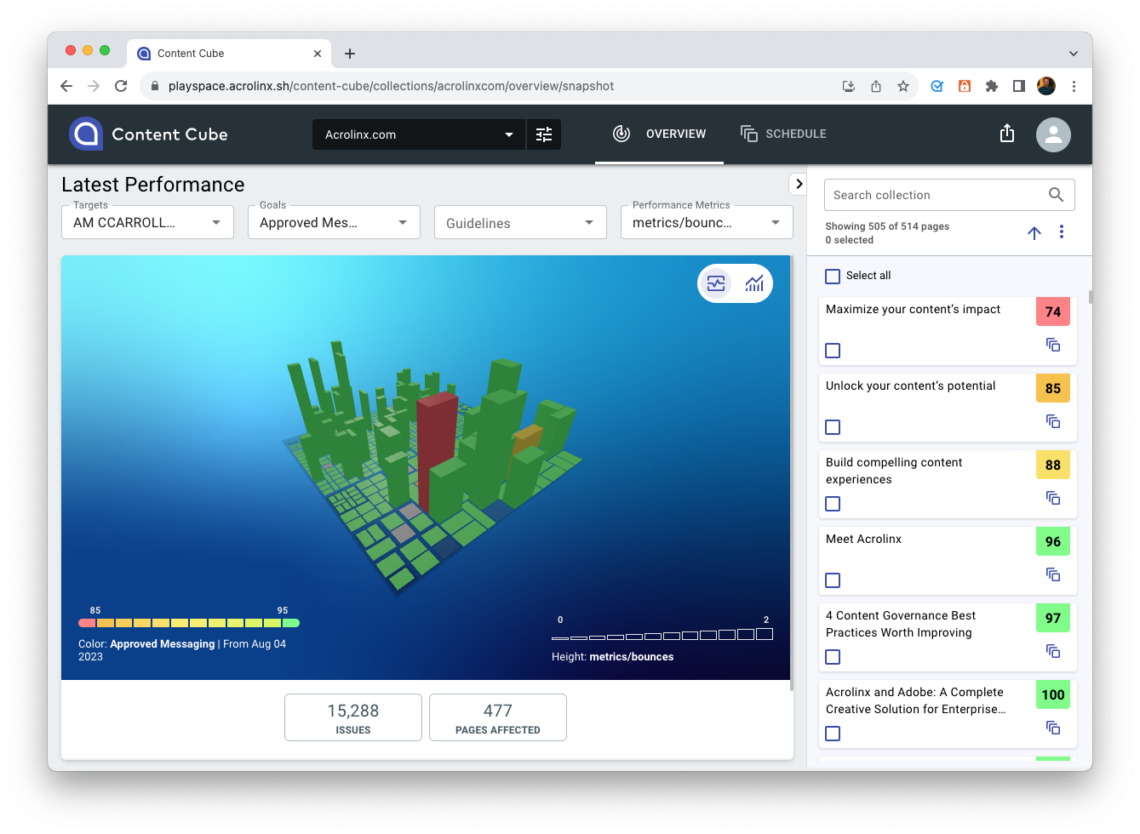
Acrolinx then prioritizes issues by type, including compliance, and export and sends detailed information to the team responsible for updating it. These details include the type of content, its location, the specific issue or problem, and a clickable replacement to fix it.
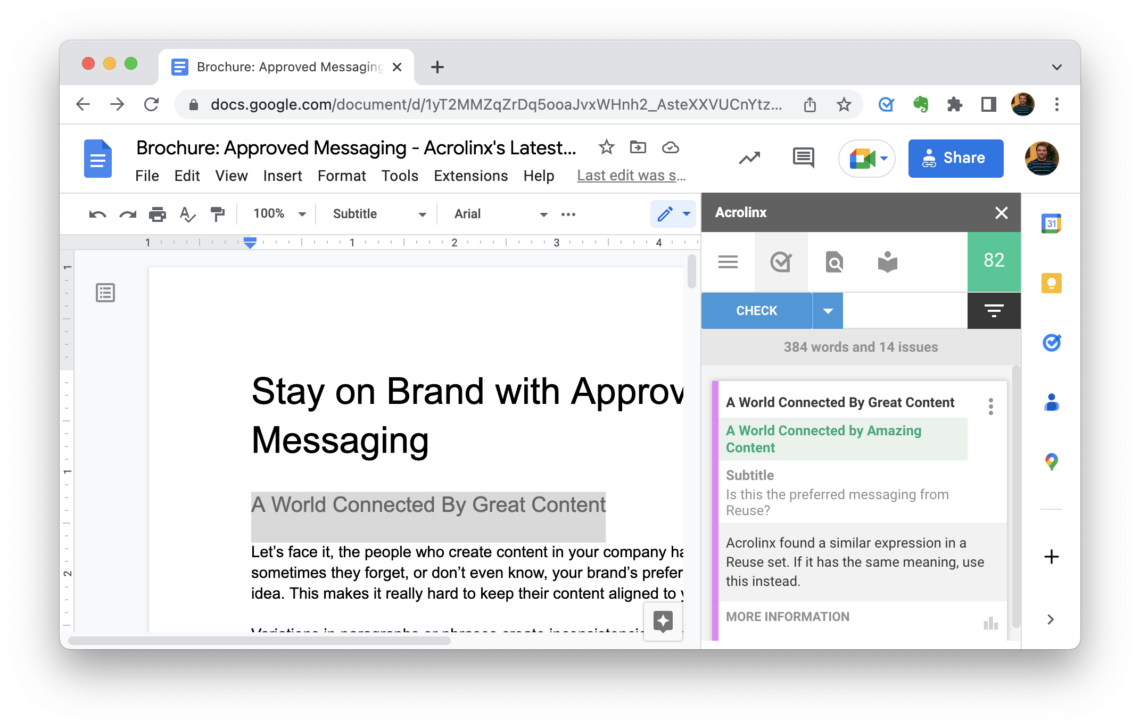
Step five: Continuously improve content quality
Financial markets are dynamic and subject to constant change. New financial products, investment strategies, and economic conditions can all impact the content’s relevance and effectiveness. Customer preferences and needs also evolve over time. What was effective and informative in the past may no longer resonate with the target audience today.
Making sure that your content reflects current market conditions and audience trends means continuously improving the quality of content.
Acrolinx makes it easy to monitor and adjust your content strategy when you notice changing customer preferences and industry trends.
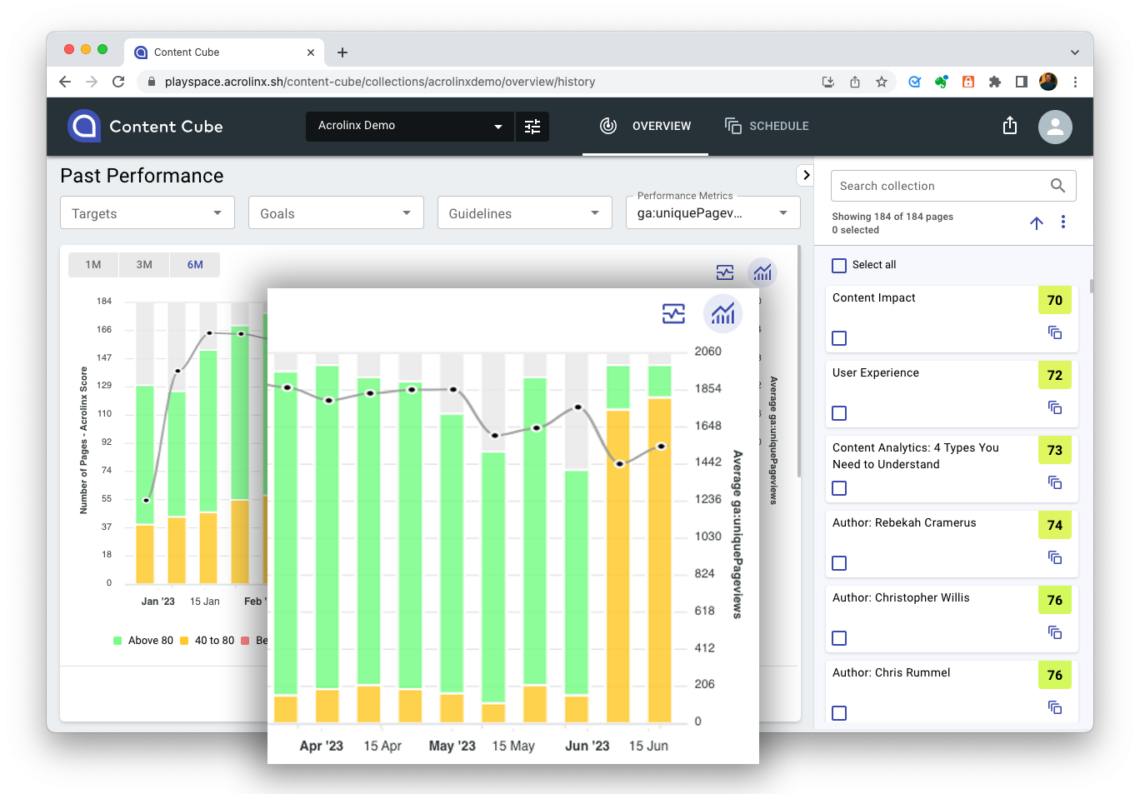
Step six: Govern content over time to maintain customer satisfaction and compliance
Financial services operate in a highly regulated environment. There are strict rules and regulations governing the content that financial institutions provide to their customers. These regulations are subject to change, and failure to comply with them can result in severe penalties. By regularly auditing and improving content, teams can ensure that it remains compliant with the latest regulations.
Acrolinx prevents the publication of non-compliant and risky content. By checking your content against clarity, consistency, correctness, inclusivity, and terminology standards, you can rest assured your always content meets your expectations. With the option to add automated checks into different stages of your content process, you could set up a quality gate, blocking the publication of technical and product content until it meets the required standards.
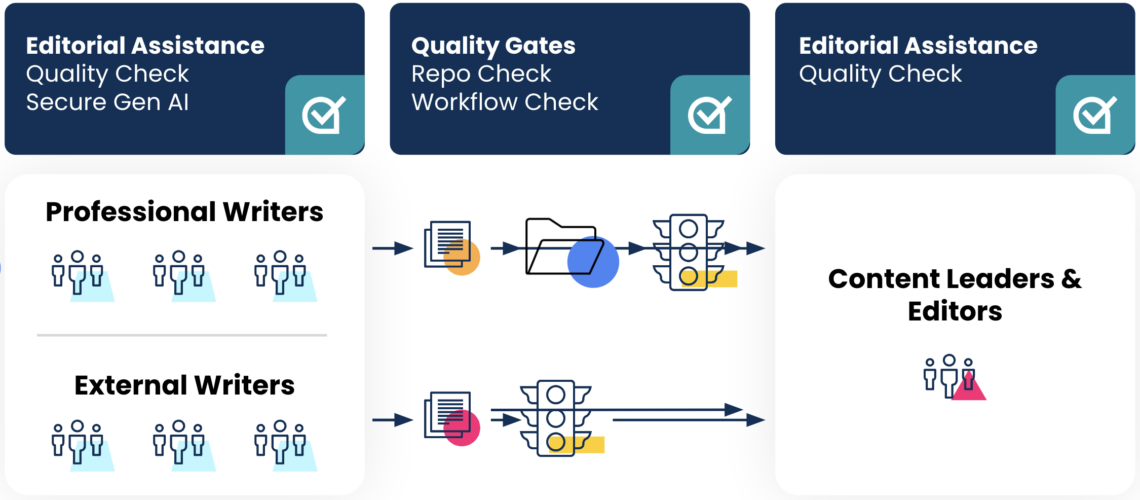
Acrolinx + banking product teams = aligned and compliant
Acrolinx is an enterprise editorial management system that leverages Natural Language Processing and Artificial Intelligence to improve the quality, consistency, and alignment of content across various channels and audiences.
In the context of banking products and serving different demographics, Acrolinx is a valuable tool for ensuring that content effectively targets and resonates with diverse customer segments. To recap, here’s how Acrolinx can help align banking products to different audiences:
- Content alignment with different demographics improves the overall user experience of banking apps and products. Customers are more likely to engage with and understand banking products when the content speaks directly to their needs and preferences. Acrolinx uses the tone your audience understands, while still retaining your distinct brand voice.
- Acrolinx helps maintain a consistent tone and messaging style across all content, regardless of the target demographic. This ensures that the bank’s brand identity remains intact while allowing for nuanced variations to suit different audience preferences.
- It can also analyze content and provide recommendations for tailoring messaging to specific demographics. It does that by suggesting adjustments in language, terminology, or content structure to align with your developed content guidelines for different age groups, income levels, or cultural backgrounds.
- The platform also provides analytics and insights into content performance. It tracks which content resonates most with specific demographics and helps product teams refine their strategies based on data-driven insights.
Acrolinx is a powerful technology for banks looking to expedite their content editorial process and align their products with various demographics through content. It helps banks effectively communicate the value of their products to a diverse customer base, ultimately improving customer satisfaction and engagement.




